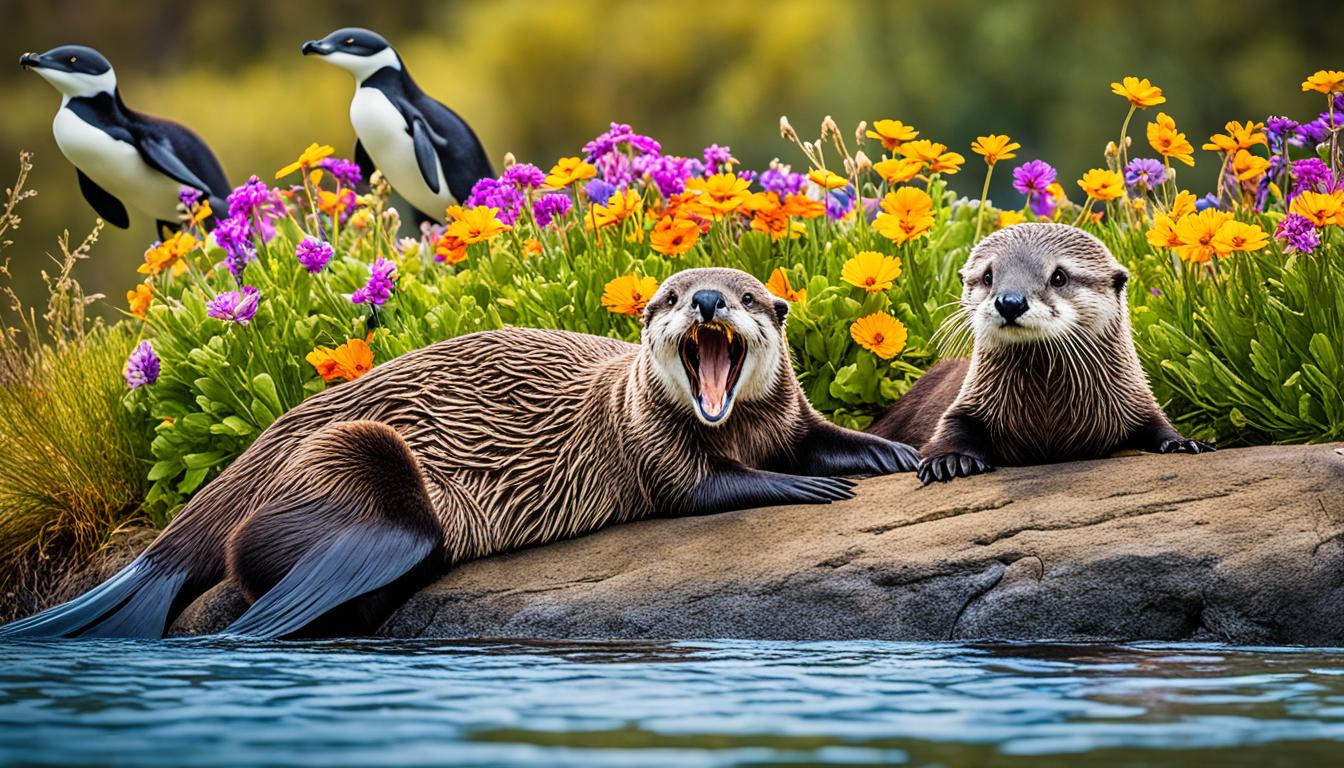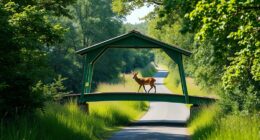In cow families, hierarchy plays a key role in determining dominance and submission, which ultimately influences herd dynamics. Factors such as age, experience, and assertiveness determine leadership positions within the group. Communication is crucial for establishing social order, with vocalizations and gestures playing a significant role. Sisters often form strong alliances that contribute to shaping the social hierarchy. Maternal care is essential for the emotional development of calves, involving grooming, licking, and protection. Mother cows’ protective instincts drive them to care for their offspring, promoting a sense of unity within the group. Conflict resolution among cows typically involves non-violent behaviors and effective communication strategies. Proper calf rearing practices and various environmental factors also impact herd dynamics. Understanding these elements is key to unraveling the intriguing world of cow family dynamics.
Key Takeaways
- Clear hierarchy based on dominance and submission influences cow family dynamics.
- Vocalizations and gestures are crucial for communication and social interactions.
- Sister alliances and strong bonds impact social hierarchy and stability.
- Maternal care through grooming and protection shapes calf development.
- Environmental factors like shelter and resources play a key role in cow family dynamics.
Hierarchical Structure Within Cow Families
In cow families, a clear hierarchical structure dictates relationships among individual cows. This hierarchy is vital for understanding social dynamics within cattle herds. Adult cattle establish a pecking order based on dominance and submission. Dominant cows hold authority over resources such as food, water, and resting areas, influencing the behavior of subordinate cows. The hierarchical structure among adult cattle can shift due to factors like age, health, and social bonds. Observing these dynamics is essential for managing the welfare and interactions within cow families.
Understanding the hierarchical structure within cattle herds helps us comprehend how leadership roles are established and maintained. By recognizing the positions of dominant and subordinate cows, we can better predict social behaviors and prevent conflicts. This knowledge enables us to create environments that promote harmonious relationships among cattle, ultimately enhancing their well-being and overall productivity.
Dominant Individuals and Leadership Roles
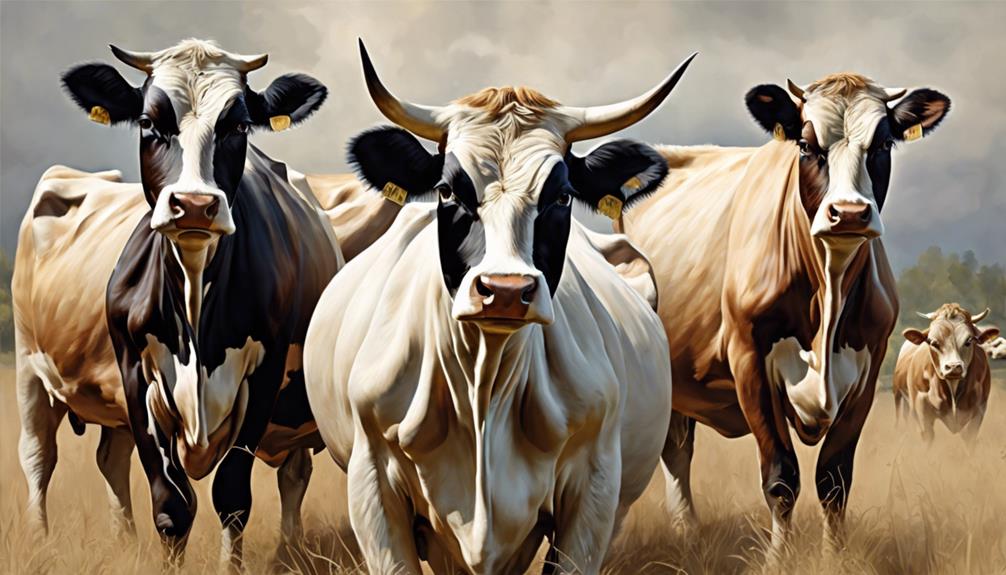
Dominant individuals in cow families play vital roles in leading and guiding the herd. Their position is determined by factors like age, experience, and assertiveness within the group's hierarchy.
Understanding how these alpha cows behave and influence the hierarchical structure is key to comprehending the dynamics of cow families.
Alpha Cow Behavior
Leading the herd with confidence and authority, adult cows often display dominant behavior that influences the social interactions within the group. These alpha cows establish their leadership roles through physical dominance, vocal cues, and assertive behaviors. They make decisions for the herd, such as leading movements to new grazing areas or water sources, shaping the overall dynamics of the herd.
Hierarchical Structure Influence
Establishing a clear understanding of how hierarchical structures are influenced by dominant individuals in cow families is essential for effectively managing herd dynamics.
Dominant cows play a vital role in shaping the pecking order within the herd, determining which individuals have priority access to resources such as food, water, and resting areas.
These dominant individuals often exhibit leadership qualities that help maintain order and cohesion within the group. Leadership roles can shift based on factors like age, experience, and social skills among the cows.
Communication and Social Interactions
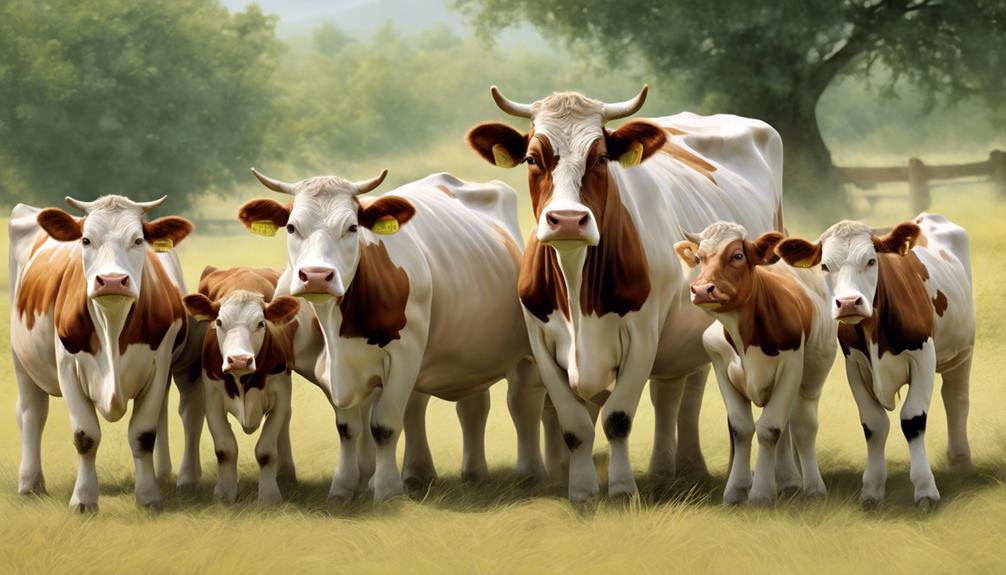
Cows use vocalizations and gestures to communicate within their herd, expressing emotions and maintaining their individual identities. Hierarchy and dominance play vital roles in their social interactions, as cows establish their positions through communication cues.
Understanding how cows communicate and interact socially can provide insights into their behaviors and relationships within the herd.
Vocalizations and Gestures
Upon entering a pasture of grazing cows, one immediately notices the intricate dance of vocalizations and gestures that underpin their communication and social interactions.
Cows express a range of emotions through different vocalizations, from distress to contentment. Additionally, gestures like head movements, ear positions, and body postures are essential in establishing social hierarchy and interactions within the herd.
These vocalizations and gestures not only help cows maintain their individual identities but also serve as a means for them to express their needs. Understanding these forms of communication is pivotal for interpreting the social dynamics of the herd and enhancing overall herd management, contributing to animal welfare, regulating heart rates, and easing the change for cows separated from their mothers.
Hierarchy and Dominance
Entering the domain of cow family dynamics reveals a structured system of hierarchy and dominance, where adult cows establish leadership through dominance interactions. Older, larger, and stronger individuals typically hold higher positions within the herd, influencing social interactions and resource access.
Communication among cows involves vocalizations, body language, and physical gestures to maintain social order and cohesion. Key cows play an essential role in controlling essential resources like food, water, and resting areas, shaping the overall dynamics of the group.
Social interactions such as grooming, playing, and forming bonds with specific herd members contribute to the herd's unity and well-being. Understanding the intricacies of hierarchy and dominance is key to effectively managing cattle behavior, welfare, and herd dynamics.
Sibling Relationships and Alliances
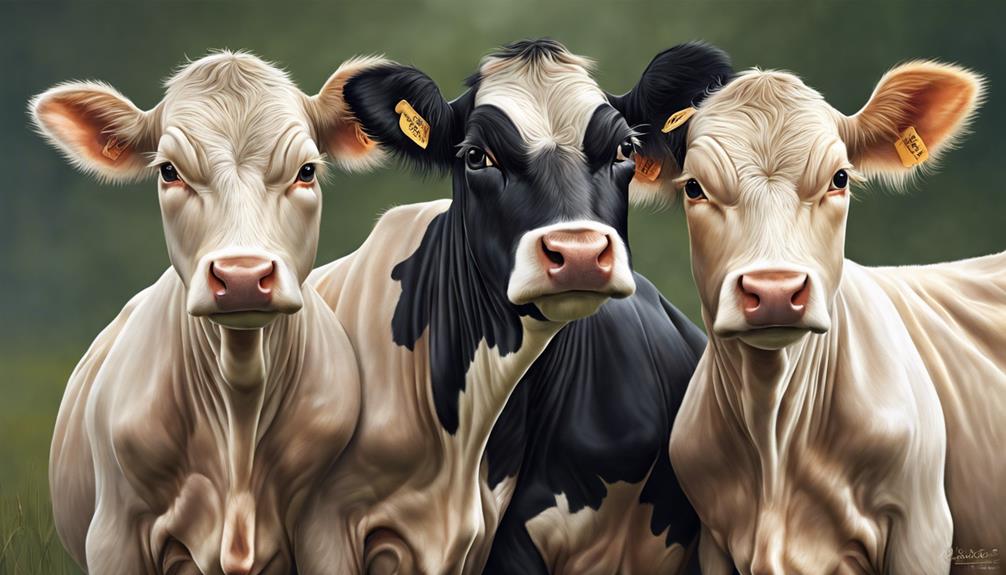
In cow families, sibling relationships play an essential role in shaping social dynamics and fostering cooperation within the herd. Sisters in a cow family often form strong alliances, supporting each other in various herd activities. These alliances can influence the herd's social hierarchy and promote collaboration among members. Maternal siblings share genetic traits and behavioral characteristics, impacting herd dynamics greatly. Cow sisters may exhibit cooperative behaviors such as grooming, grazing together, and protecting each other, which contribute to the overall stability and well-being of the cow family unit.
Around the world, in both meat and dairy industries, sibling relationships are vital for maintaining a harmonious herd. The world's largest cow families rely on these alliances to promote efficient herd management and productivity. By understanding the importance of sibling relationships and fostering cooperation among sisters, cow farmers can create a more cohesive and successful herd dynamic. By recognizing and nurturing these bonds, we can enhance the well-being and productivity of our bovine companions.
Maternal Care and Nurturing Behaviors
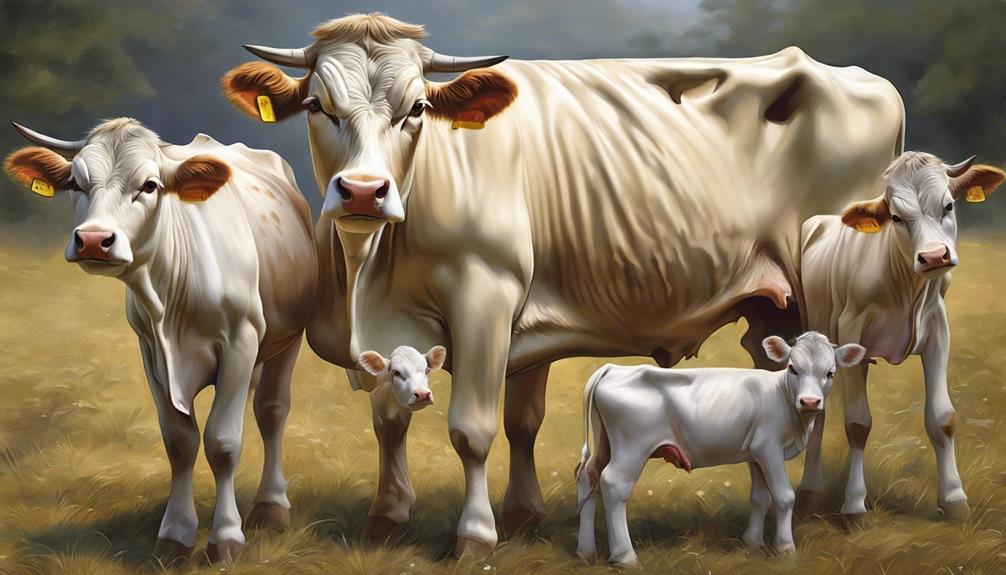
Maternal care in cow families involves essential behaviors like grooming, licking, and protecting newborn calves. These nurturing actions are driven by a mother's instinct to guide, teach, and comfort her offspring.
The bond between a cow and her calf is vital for the calf's growth, well-being, and integration into the herd.
Maternal Bonding Behaviors
Establishing a strong bond, cows demonstrate maternal bonding behaviors through actions like licking and nuzzling their calves immediately after birth. These initial moments are vital for forming a deep connection between the cow and her calf.
As the calf grows, the cow continues to show maternal care by shielding it from dangers and predators within the herd. Nurturing behaviors extend to providing essential resources like milk, warmth, and grooming for the calf's well-being and growth.
Through vocalizations and body language, cows communicate with their calves, fostering a close relationship driven by maternal instincts. These strong maternal bonds play a significant role in shaping the calf's socialization, emotional development, and overall health within the herd.
Nursing and Feeding
Upon the birth of a calf, the mother cow immediately engages in nurturing behaviors, such as licking and grooming, to establish a strong bond and provide essential care for the newborn. Nursing and feeding are important aspects of cow family dynamics. The table below outlines key points regarding maternal care and nurturing behaviors in cow families:
| Nursing and Feeding Behaviors | Description | Importance |
|---|---|---|
| Milk Provision | Mother cows provide milk for calf nutrition. | Guarantees proper growth and development. |
| Licking and Grooming | Cows groom calves to establish a bond. | Strengthens emotional connection within the cow family. |
| Nutrient-Rich Milk | Mother's milk contains essential nutrients. | Supports calf's immune system and overall well-being. |
Maternal care plays an essential role in the well-being of calves, fostering a nurturing environment within cow families.
Protective Mothering Instincts
Exhibiting a strong bond through protective behaviors, cows actively nurture and care for their offspring with instinctual dedication. They engage in grooming, licking, and vocalizations to guarantee the well-being of their calves. Cows go beyond physical protection by creating a safe environment, guiding their young ones, and defending them from potential threats.
Their maternal instincts also involve recognizing individual calves' voices, fostering bonding through constant contact, and providing nourishment through nursing. These protective mothering instincts manifest in cows positioning themselves between their calves and perceived dangers, showcasing their innate nurturing abilities.
Through emotional support and a stable environment, cows demonstrate a deep commitment to their offspring's growth and well-being, exemplifying the essence of maternal care in the animal kingdom.
Intragroup Competition and Conflict Resolution
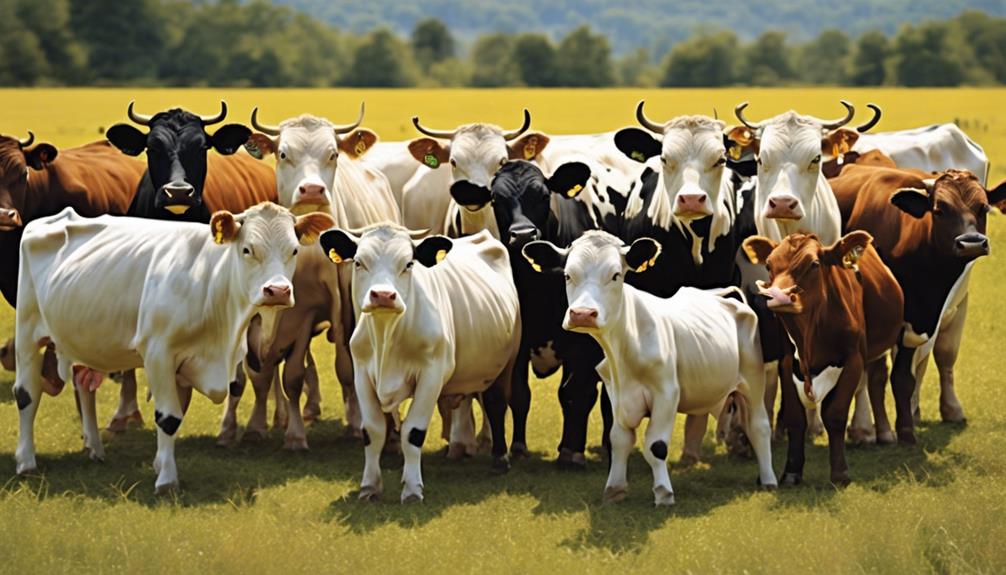
In cow families, intragroup competition for resources such as food, water, and space can lead to conflicts that are resolved through non-violent behaviors and communication strategies. Vital hierarchies play a significant role in establishing social order and reducing conflicts within the group. When conflicts arise, cows often use non-violent behaviors like displacements and submissive postures to resolve them. Communication through vocalizations and body language also helps in de-escalating tense situations and maintaining harmony within the family unit.
Understanding the dynamics of intragroup competition and conflict resolution is essential for effectively managing cow families. By recognizing the signs of conflict and knowing how to interpret cow behaviors, caretakers can intervene when necessary to prevent escalation and maintain peace within the group. Encouraging positive interactions and providing ample resources can also help reduce the likelihood of conflicts arising in the first place. Overall, promoting a supportive and harmonious environment within cow families is key to ensuring their well-being and productivity.
Group Cohesion and Unity
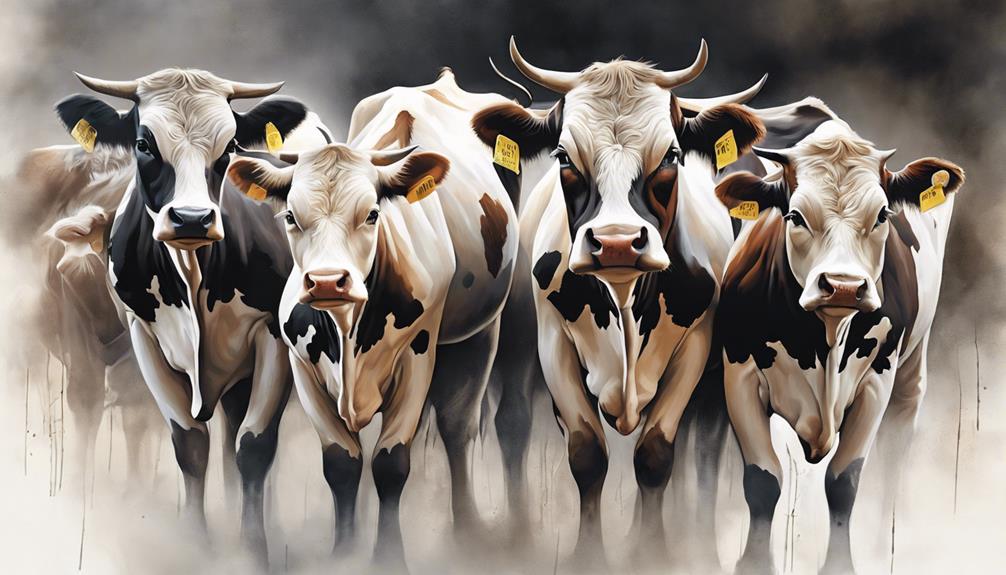
Cows exhibit a remarkable sense of unity and cohesion within their herds, nurturing close bonds and strong social structures. Through vocalizations, body language, and various behaviors, cows communicate effectively to maintain this group cohesion. This unity plays a crucial role in helping cows feel secure, reduce stress, and navigate their social hierarchy with ease. By relying on each other for support, protection, and companionship, cows highlight the importance of their group dynamics.
The unity within cow families contributes immensely to overall herd health, well-being, and successful breeding outcomes. This strong bond among cows not only guarantees their physical safety but also enriches their emotional lives. Understanding and appreciating the significance of group cohesion and unity in cows can offer valuable insights into fostering harmonious relationships within their herds.
As we explore further into the intricate dynamics of cow families, we uncover the profound impact that unity and togetherness have on these intelligent and social animals.
Impact of Calf Rearing Practices
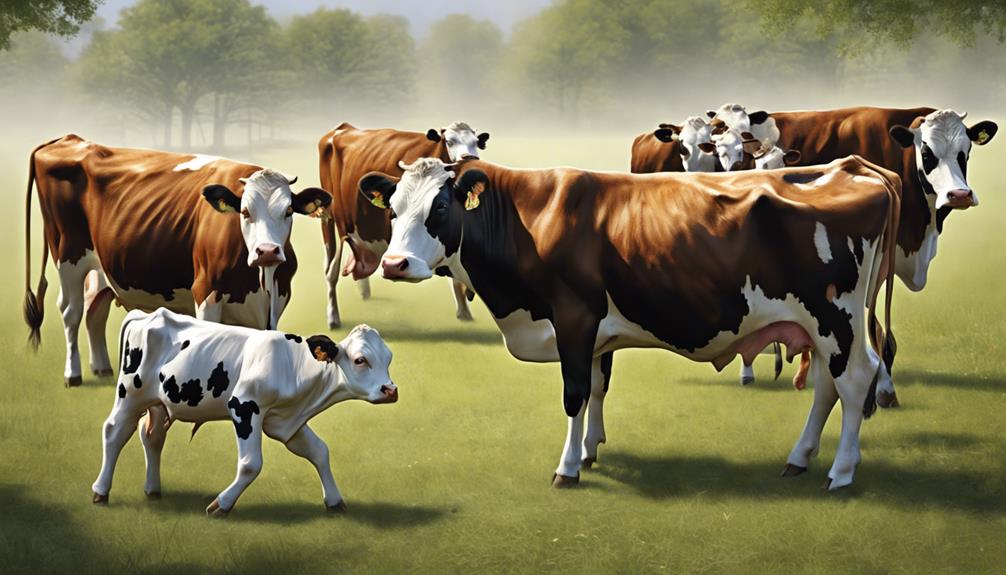
Enhancing the foundation of cow family dynamics, the successful implementation of calf rearing practices greatly influences the overall well-being and development of calves. Proper care, such as early colostrum feeding and guaranteeing adequate nutrition, is essential for the health and growth of calves.
Additionally, following a strict vaccination schedule and conducting regular health checks can help prevent common diseases and secure the calves' overall well-being. Socialization with other calves and human interaction are key factors in shaping their behavior and social skills.
Providing a clean and comfortable environment for resting and playing contributes heavily to their physical and mental development. Monitoring growth rates, body condition, and behavior indicators allows for early detection of any health issues or developmental concerns in calves.
Influence of Environmental Factors
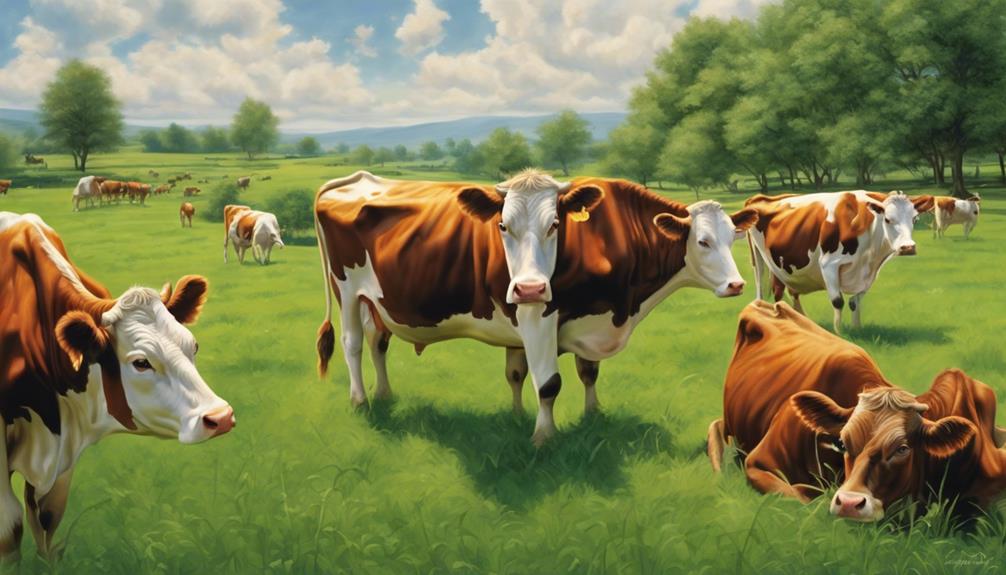
Climate, terrain, and available resources greatly shape the dynamics of cow families. When considering the influence of environmental factors on cow family dynamics, several key points come to light:
- Adequate shelter, pasture quality, and water sources are essential for maintaining healthy cow families.
- Access to clean air, sufficient space, and proper waste management all contribute to the well-being of cow families.
- Environmental stressors such as extreme temperatures or lack of forage can impact cow reproduction and overall health.
- Implementing good environmental management practices can notably enhance cow family productivity and the performance of the entire herd.
Understanding how environmental factors affect cow family dynamics is important for optimizing herd health and productivity. By prioritizing the well-being of the cows and creating a favorable environment, farmers can make sure that their cow families thrive and contribute positively to the overall success of the operation.
Long-Term Stability and Herd Dynamics
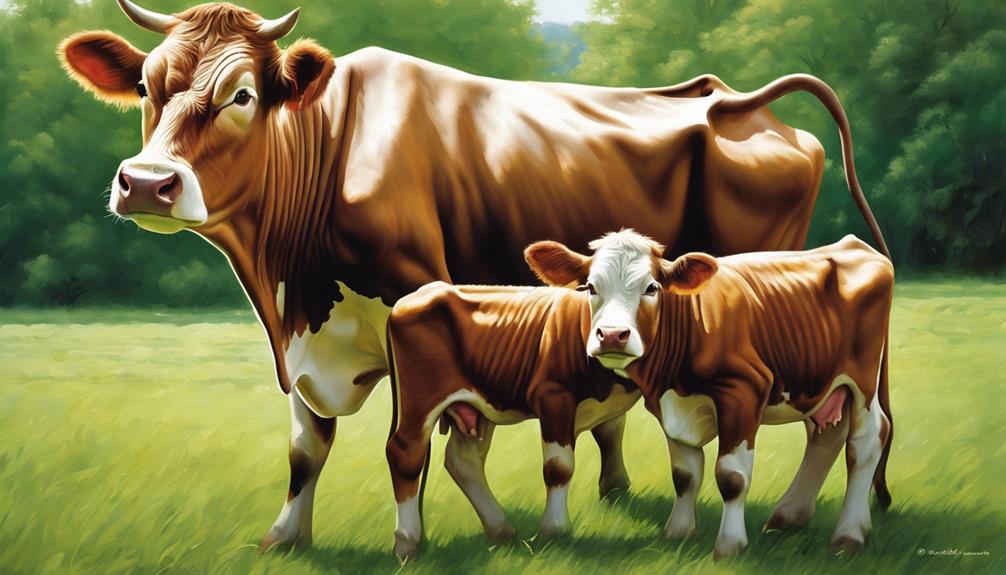
Maintaining stability in dairy herds over the long term hinges on the cohesive dynamics within cow families. Understanding the intricate social structures and hierarchies within the herd is essential for ensuring a stable environment. By recognizing the roles and relationships within cow families, farmers can make informed breeding decisions and implement effective herd management practices.
Consistency in cow family interactions not only fosters a harmonious atmosphere but also contributes to enhanced milk production and overall herd health. Long-term observation of these dynamics provides valuable insights into the behavior of individual cows and the herd as a whole. By studying and nurturing these relationships, farmers can create a sustainable and thriving herd that benefits from strong long-term stability.
Herd dynamics aren't only fascinating to observe but also hold the key to unleashing the full potential of a dairy operation.
Frequently Asked Questions
What Is the Family Structure of Cows?
The family structure of cows involves a matriarch leading a herd, creating close bonds within the group. Calves stay with their mothers, learning social behaviors. Hierarchy and relationships influence herd interactions, impacting overall well-being and health.
What Are 10 Interesting Facts About Cow?
I'll share ten intriguing facts about cows! They produce gallons of saliva daily, boast excellent memory, and have a powerful sense of smell. Their digestive system is unique, maintaining a body temperature of 101.5°F.
What Is the Friendliest Cow Breed?
I know Jersey cows stand out as the friendliest breed for their docile nature. Their gentle temperament and love for human interaction make them a joy to be around. They bring a sense of warmth and calmness to any farm.
What Cattle Have the Best Temperament?
In my experience, Hereford, Angus, and Shorthorn cattle boast the best temperaments. Their calm demeanor makes handling them a breeze, reducing stress and boosting productivity. Choosing breeds like Charolais and Simmental can lead to a more efficient farm operation.
Do Cow Family Dynamics Influence Their Behavior in Defying Orders?
Cow family dynamics can greatly affect their behavior in being stubborn animals defying orders. According to research, leadership within cow families plays a key role in how they respond to commands. Dominant cows often influence others to challenge authority, leading to a herd of stubborn animals defying orders.
Conclusion
To sum up, the dynamics within cow families can be likened to a well-organized orchestra, with each member playing a vital role in maintaining harmony and balance.
Understanding the hierarchical structure, communication, and nurturing behaviors within these families can help us appreciate the complexity and importance of their social interactions.
By recognizing and respecting these dynamics, we can learn valuable lessons about cooperation, leadership, and unity in our own relationships and communities.


